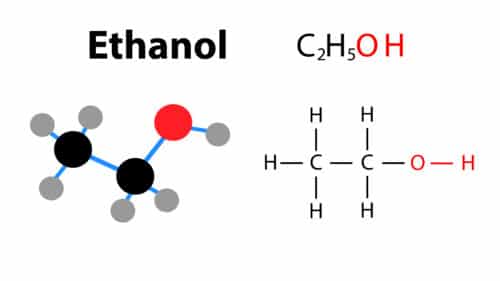Previously we discussed why food grade ethanol is the better choice in South Africa. This article looks at food grade ethanol in more detail and explains the difference between ethanol and other types of alcohol.

The difference between alcohol and ethanol
Understanding the difference between alcohol and ethanol is very important, especially if it’s to be used for consumption or cosmetics. All ethanol is alcohol; not all alcohol is ethanol. The distinction between alcohol and ethanol is simple. Ethanol, or ethyl alcohol, is THE ONLY type of alcohol that you can drink without seriously harming yourself, and then only if it hasn’t been denatured or doesn’t contain toxic impurities.
An alcohol is an organic compound, in which a hydroxyl functional group is bound to a carbon atom. Aside from ethanol, two other types of alcohol commonly seen are methyl alcohol (methanol) and isopropyl alcohol (isopropanol).
Methanol is a lab solvent, fuel additive, and antifreeze. Like other types of alcohol, it is readily absorbed through the skin. Methanol is dangerously toxic and can cause nervous system and organ damage. Isopropyl alcohol is used as rubbing alcohol and is used in hand sanitiser products. The cooling sensation we experience is due to it quickly evaporating from skin. Isopropyl alcohol is not as toxic as methanol and is approved for use in cosmetics. However, isopropyl alcohol is not safe to drink.
Ethanol, often abbreviated as EtOH, Is an important industrial chemical; used as a solvent, in the synthesis of other organic chemicals, and as an additive to automotive gasoline (forming a mixture known as a gasohol).
Ethanol – pronounced [ Eth-uh-nawl, -nol ]
The intoxicating ingredient of many alcoholic beverages such as beer, wine, and distilled spirits is ethanol. Ethanol is frequently called grain alcohol because it is the main type of alcohol produced by grain fermentation.
“Food grade alcohol” means ethyl alcohol that is safe for human consumption because of its purity (the lack of additives). Therefore, food grade alcohol goes by many names in the industry, including “food grade ethanol”, “nondenatured alcohol”, “grain alcohol”, or “sugar cane alcohol”.
So, in short, the answer to the frequently asked question, “Can you drink food grade ethanol? “Yes”, and we will look at different uses for food grade ethanol in Part 2 of this post.
Denatured alcohol
It is very important to know that denatured alcohol is not food grade alcohol. Ethanol (ethyl alcohol) made unfit for human consumption by adding one or more chemicals (denaturants) to it is called denatured alcohol. Denaturing refers to removing a property from the alcohol (being able to drink it), not to chemically altering or decomposing it, so denatured alcohol contains ordinary ethyl alcohol. The most common additive used is methanol (5–10%), giving rise to the term methylated spirits.
A Recap: Why food grade ethanol is better than Everclear grain alcohol.
Everclear is not available for sale in South Africa, but Royal Vodka is very similar. However, at R549 for 750ml it is significantly more expensive than food grade ethanol. 1 Litre of Royal Vodka costs R732, whereas food grade ethanol can be as cheap as R300 per litre.
It’s also important to note that 96% food grade ethanol is the best option. Ethanol cannot be concentrated by ordinary distillation to greater than 97.2% by volume (95.6% by weight), because at that concentration, the vapour has the same ratio of water to alcohol as the liquid, a phenomenon known as azeotropy. The 190-proof variation of Everclear is 92.4% ethanol by weight and is thus produced at approximately the practical limit of distillation purity.
Food Grade Ethanol – Part 2
Now that we understand the differences between various types of alcohol. We can start having fun. In our next article, Food Grade Ethanol – Part 2, we will look at the different used for our favourite alcohol.
References
- https://en.wikipedia.org/wiki/Ethanol
- https://www.britannica.com/science/ethanol
- https://www.thoughtco.com/alcohol-versus-ethanol-3976082
- https://sciencenotes.org/know-the-difference-between-ethanol-and-alcohol/
